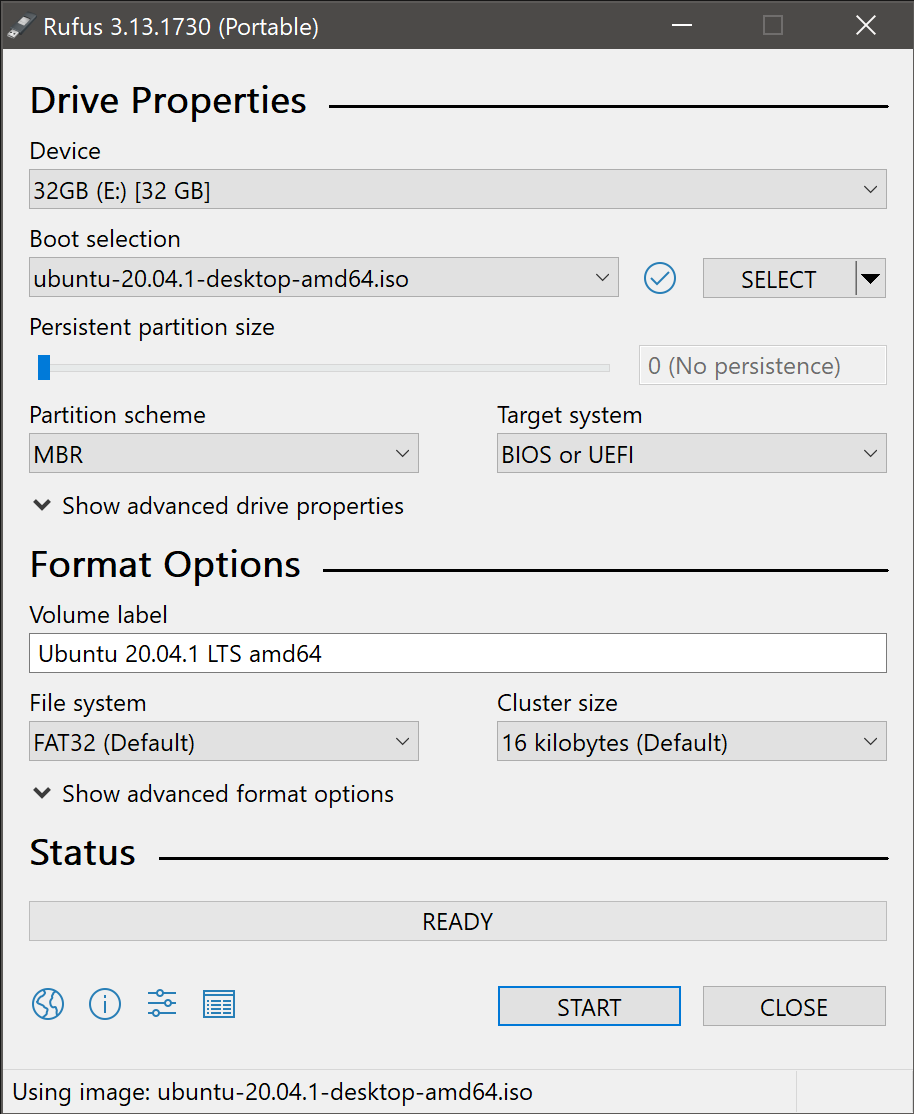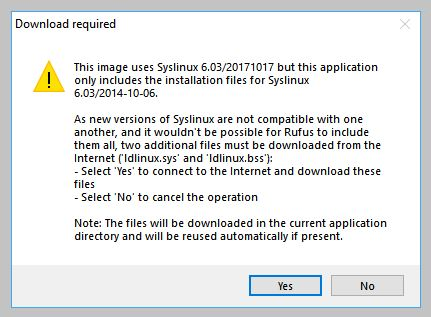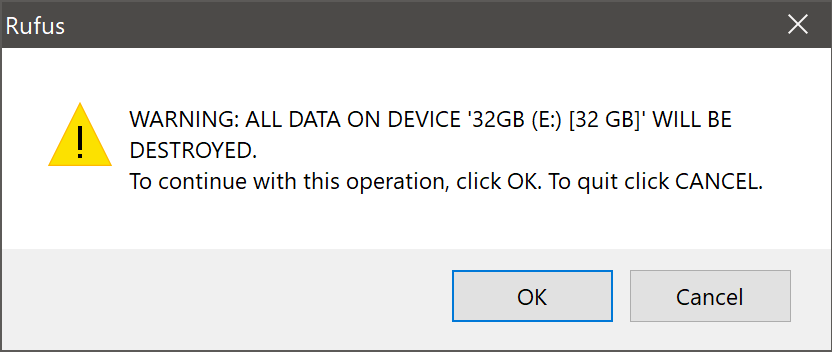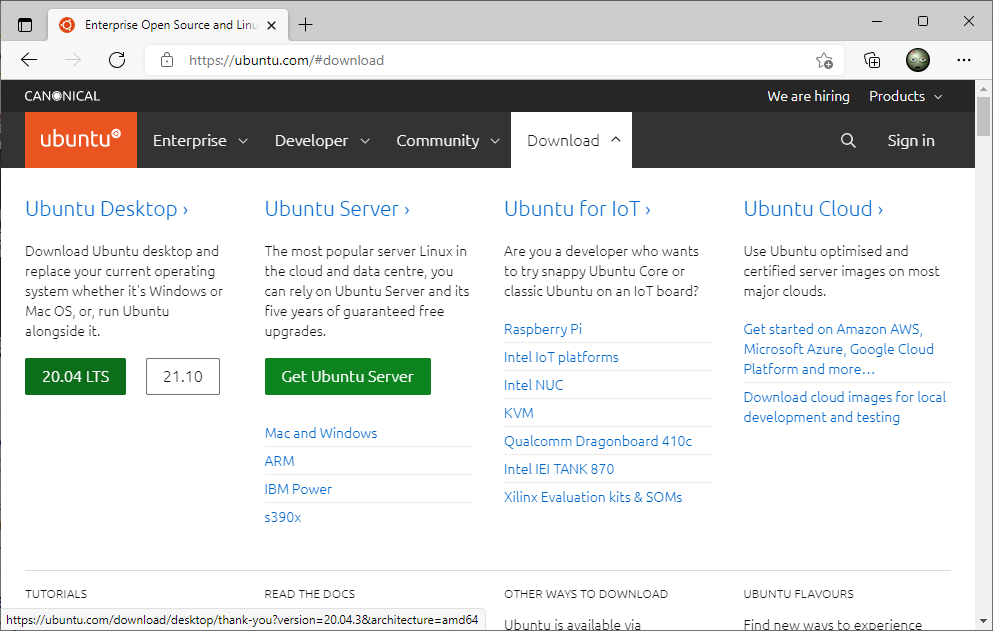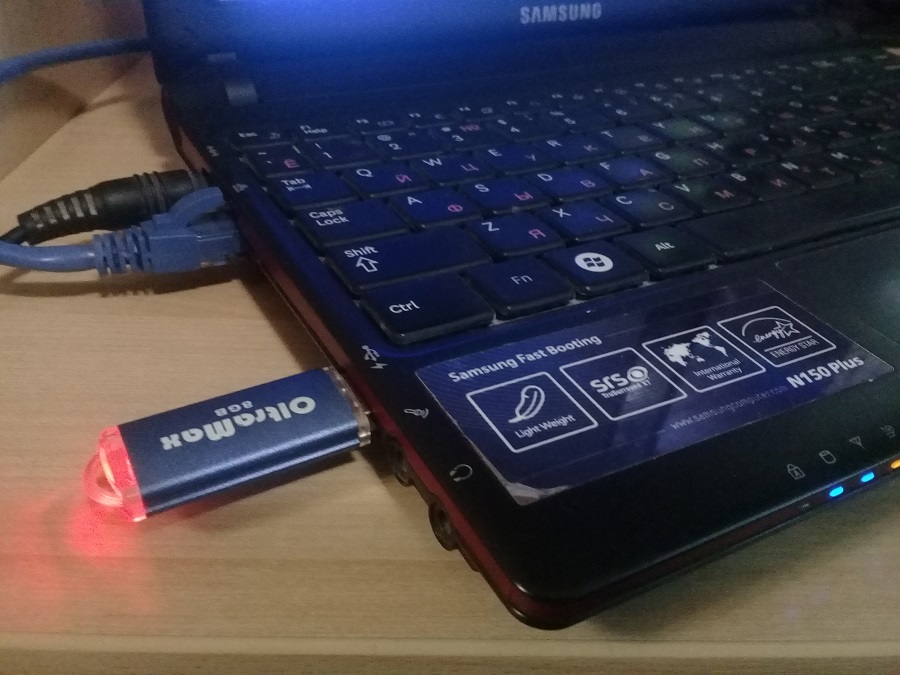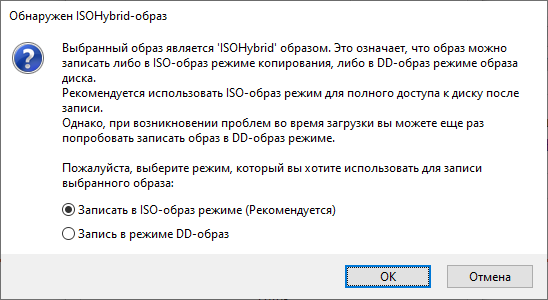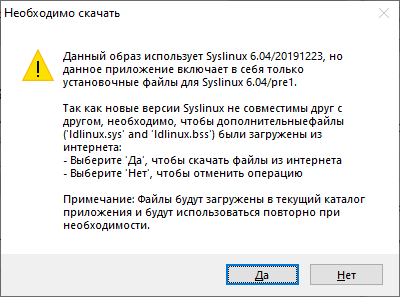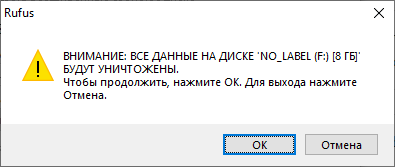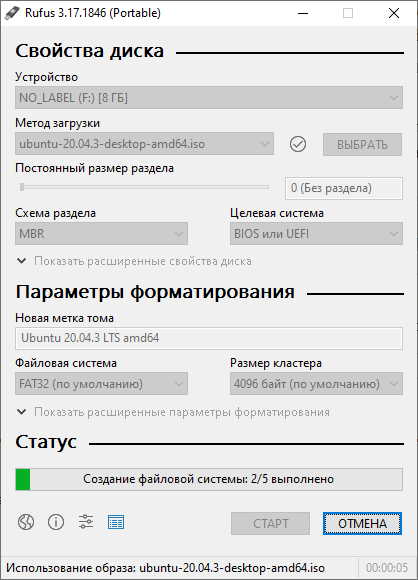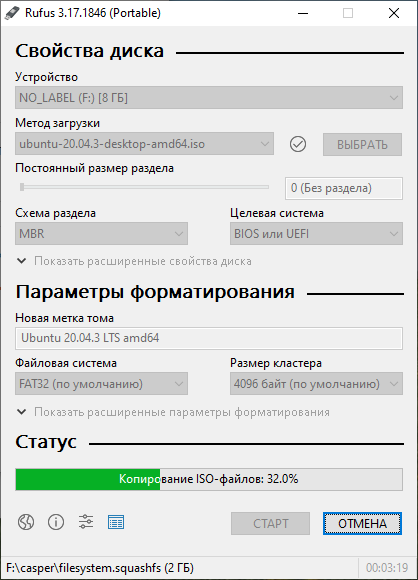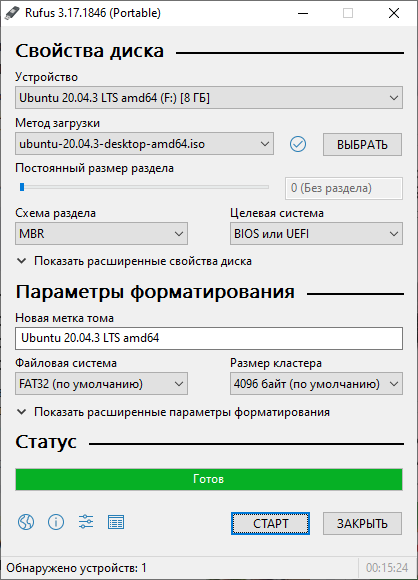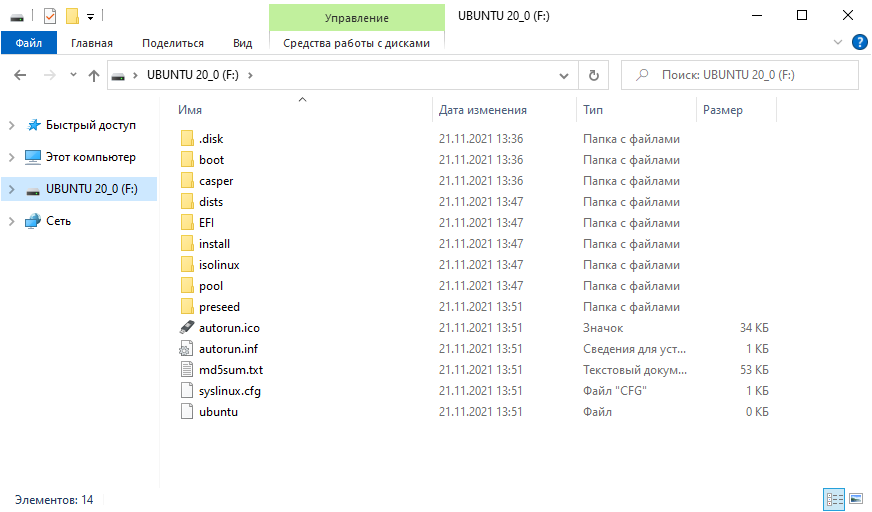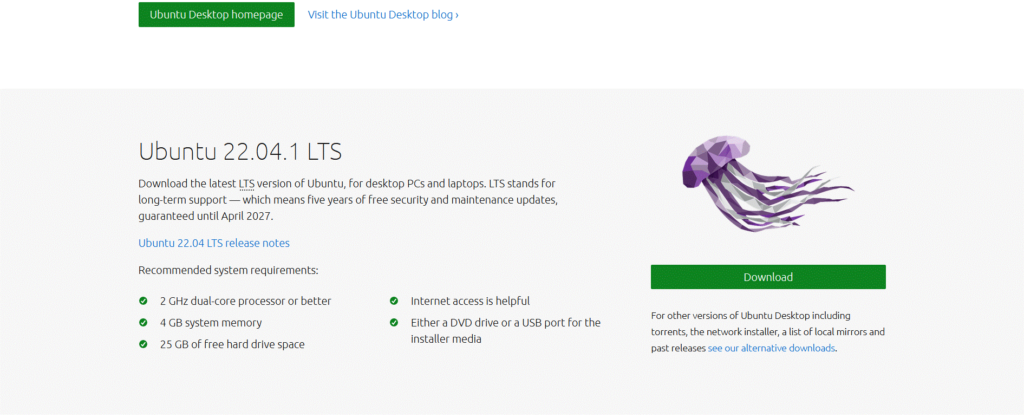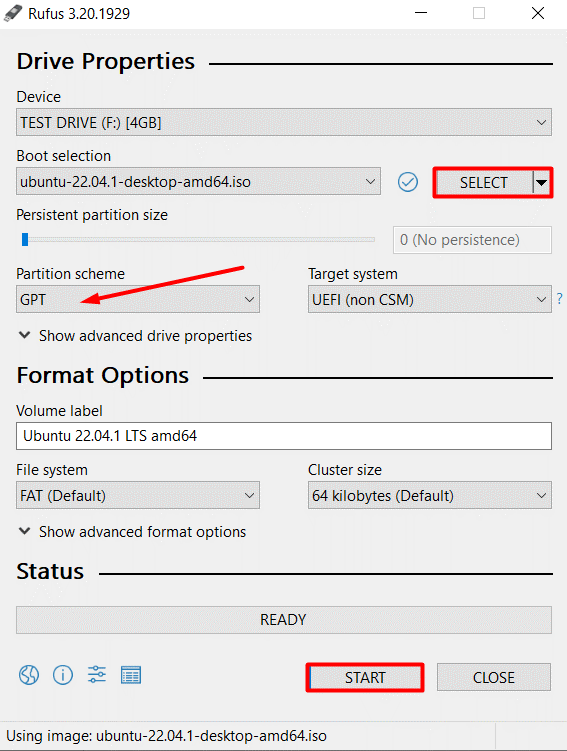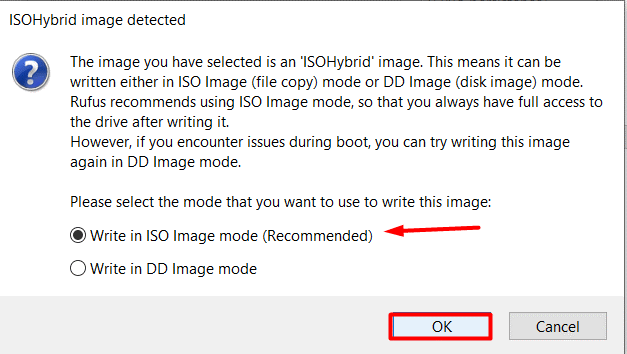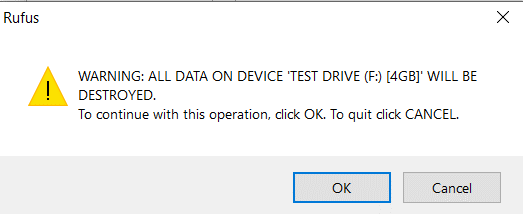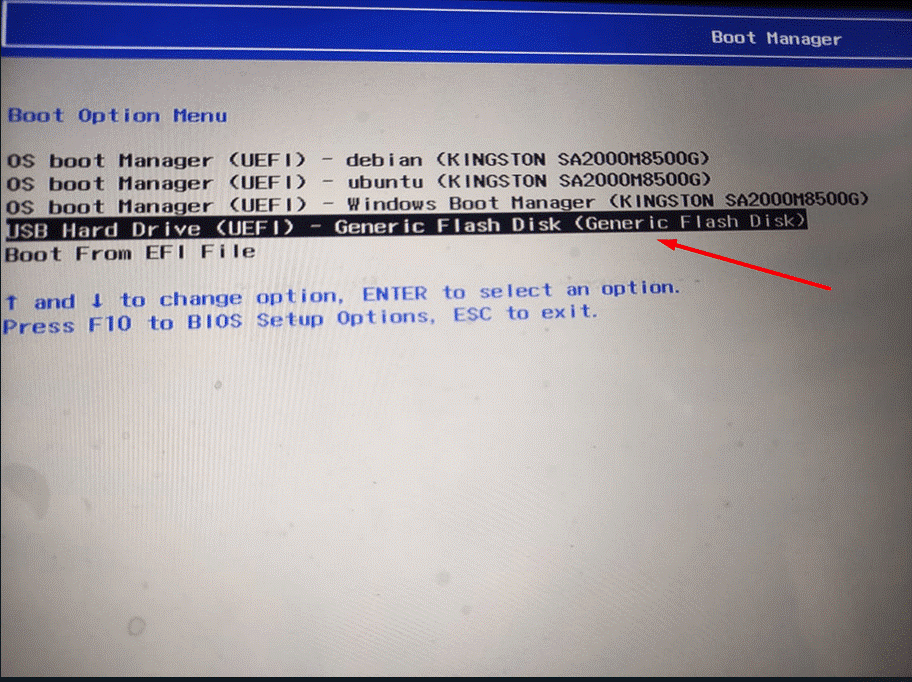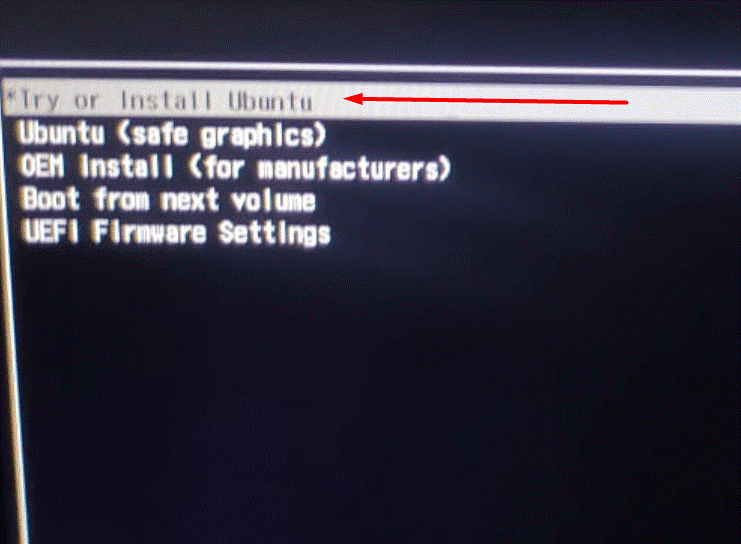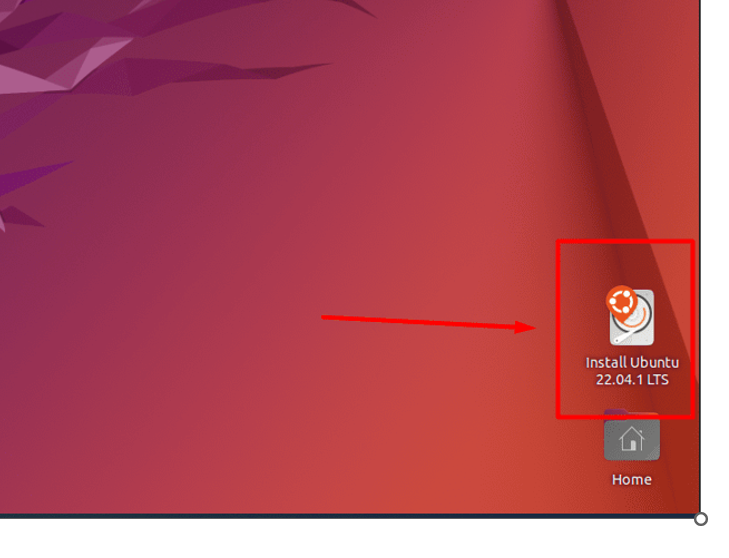1. Overview
With a bootable Ubuntu USB stick, you can:
- Install or upgrade Ubuntu
- Test out the Ubuntu desktop experience without touching your PC configuration
- Boot into Ubuntu on a borrowed machine or from an internet cafe
- Use tools installed by default on the USB stick to repair or fix a broken configuration
This tutorial will show you how to create a bootable USB stick on Microsoft Windows using Rufus.
For most users we recommend balenaEtcher instead of Rufus which is simpler to use and also available on MacOS and Ubuntu. Instructions are now included in the primary Install Ubuntu Desktop tutorial.
Creating a bootable Ubuntu USB stick from Microsoft Windows is very simple and we’re going to cover the process in the next few steps.
Alternatively, we also have tutorials to help you create a bootable USB stick from both Ubuntu and Apple macOS.
2. Requirements
You will need:
- A 4GB or larger USB stick/flash drive
- Microsoft Windows XP or later
- Rufus, a free and open source USB stick writing tool
- An Ubuntu ISO file. See Get Ubuntu for download links
Take note of where your browser saves downloads: this is normally a directory called ‘Downloads’ on your Windows PC. Don’t download the ISO image directly to the USB stick! If using Windows XP or Vista, download version 2.18 of Rufus.
3. USB selection
Perform the following to configure your USB device in Rufus:
- Launch Rufus
- Insert your USB stick
- Rufus will update to set the device within the Device field
- If the Device selected is incorrect (perhaps you have multiple USB storage devices), select the correct one from the device field’s drop-down menu
You can avoid the hassle of selecting from a list of USB devices by ensuring no other devices are connected.
4. Select the Ubuntu ISO file
To select the Ubuntu ISO file you downloaded previously, click the SELECT to the right of “Boot selection”. If this is the only ISO file present in the Downloads folder you will only see one file listed.
Select the appropriate ISO file and click on Open.
5. Write the ISO
The Volume label will be updated to reflect the ISO selected.
Leave all other parameters with their default values and click START to initiate the write process.
6. Additional downloads
You may be alerted that Rufus requires additional files to complete writing the ISO. If this dialog box appears, select Yes to continue.
7. Write warnings
You will then be alerted that Rufus has detected that the Ubuntu ISO is an ISOHybrid image. This means the same image file can be used as the source for both a DVD and a USB stick without requiring conversion.
Keep Write in ISO Image mode selected and click on OK to continue.
Rufus will also warn you that all data on your selected USB device is about to be destroyed. This is a good moment to double check you’ve selected the correct device before clicking OK when you’re confident you have.
If your USB stick contains multiple partitions Rufus will warn you in a separate pane that these will also be destroyed.
8. Writing the ISO
The ISO will now be written to your USB stick, and the progress bar in Rufus will give you some indication of where you are in the process. With a reasonably modern machine, this should take around 10 minutes. Total elapsed time is shown in the lower right corner of the Rufus window.
9. Installation complete
When Rufus has finished writing the USB device, the Status bar will be filled green and the word READY will appear in the center. Select CLOSE to complete the write process.
Congratulations! You now have Ubuntu on a USB stick, bootable and ready to go.
To use it you need to insert the stick into your target PC or laptop and reboot the device. It should recognise the installation media automatically during startup but you may need to hold down a specific key (usually F12) to bring up the boot menu and choose to boot from USB.
For a full walkthrough of installing Ubuntu, take a look at our install Ubuntu desktop tutorial.
Finding help
If you get stuck, help is always at hand:
- Ask Ubuntu
- Ubuntu Forums
- IRC-based support
Was this tutorial useful?
Thank you for your feedback.
A full transition from Windows to Linux may not be easy, that is why Ubuntu allows its users to test the live CD (or USB) first to see if they like it, then install it on their systems. This guide shows you how to create a bootable Ubuntu USB in Windows. Using this media, you can boot up Ubuntu on any computer, perform your tasks and leave the main OS unmodified.
To follow along with the guide, ensure:
- Internet connection to download the required tools.
- A USB Flash drive — at least 8GB (recommended).
- You have downloaded the latest version of the Ubuntu ISO from the official Ubuntu download page.
Also read: 7 Ways to Speed up Ubuntu
Create Bootable Ubuntu USB with Rufus
The easiest method to create a bootable Ubuntu USB is to use Rufus. The ability to set persistence in Ubuntu USB drives is now supported in newer versions of Rufus.
1. Plug your USB drive into your Windows computer. Next, launch Rufus and click the «Select» button to select the Ubuntu ISO.
2. Set the size for your persistence file.
3. Configure the partition scheme.

4. Click «Start» to flash the ISO.
Once the flash process is completed, reboot the PC into your Ubuntu system.
Create Bootable Ubuntu USB with UNetbootin
Another method to create a bootable Ubuntu USB in Windows is to use UNetbootin.
1. Download the UNetbootin tool from its official page.

2. Launch the UNetbootin tool. You may have noticed you can select the «Distribution» option, choose the distro you want to install and UNetbootin will download the ISO file for you. For this guide, we will use the “Disk Image” option since we have already downloaded the Ubuntu ISO.
3. Select the “three-dotted” section and navigate to the location of the downloaded Ubuntu ISO.

Select the Ubuntu ISO and load it into UNetbootin.
4. Before flashing the ISO to the USB, set up persistence. To do this, adjust the option “Space used to preserve files across reboots.» Allocate the desired space in MB.

Note: if you are flashing older Ubuntu ISOs, this might not work and you may need to perform a manual configuration as shown in the steps below.
5. In the “Type” drop-down at the bottom, make sure “USB Drive” is selected, select the Drive directory of your USB drive next to it, then click “OK” to start the process. After several minutes, the process will be complete.
You now have a bootable, portable Ubuntu build.
Also read: Make Linux Live USB Easily with balenaEtcher
Add Persistence Manually to the Bootable USB
In some instances, UNetbootin may fail to add the persistence. To resolve this, you can manually configure this option.
1. Download the Casper-RW-Creator file from the official link.
2. Once downloaded, launch the file and select the USB drive.
3. Set the persistence file.
Note: if you are using the Ubuntu 20.04 image, the persistence file has been renamed to writeable. However, for older images, select the persistence file as casper.

4. Select the size to allocate the persistence file and click «Create.»

5. Once the process is complete, you should have the file writeable or casper in the root of the drive for persistence.

To point Ubuntu to the persistence file, edit the «grub.cfg» file in «/boot/grub/grub.cfg.»
Find the entry:
menuentry "Ubuntu" { set gfxpayload=keep linux /casper/vmlinuz file=/cdrom/preseed/ubuntu.seed maybe- ubiquity quiet splash --- initrd /casper/initrd }
Edit the file and add the casper module. The above entry should be:
menuentry "Ubuntu" { set gfxpayload=keep linux /casper/vmlinuz file=/cdrom/preseed/ubuntu.seed maybe-ubiquity quiet boot=casper quiet splash persistent --- initrd /casper/initrd }
Finally, save the file and reboot the computer into your Ubuntu session. During Boot, select the “Ubuntu” section to use the persistence file.
Wrapping Up
You now have a bootable Ubuntu USB drive that you can take with you anywhere. It’s a great option in the way of security, ensuring you don’t have to enter and leave your data on strangers’ or public computers. As an extra measure, though, remember to password-protect your Ubuntu drive.
If you want to start from scratch and get yourself a blank flash drive, we can guide you through the process of formatting a USB drive in Windows. We can also show you how you to format a drive in FAT32 specifically, which isn’t possible using the native formatting tool in Windows 10.
John is a technical writer at MTE, when is not busy writing tech tutorials, he is staring at the screen trying to debug code.
Subscribe to our newsletter!
Our latest tutorials delivered straight to your inbox
If you boot with UEFI (not BIOS or UEFI with BIOS compatibility mode (a.k.a. CSM)) all you’ll need is GParted and a file manager.
The ISO must be configured for UEFI boot for this to work. I’ve successfully done this with both Windows 8.1 and Ubuntu 14.04, but I can’t vouch for any other OS. (Edit: I just tried this with Windows 10 without success. Don’t know why, but WinUSB worked so I didn’t investigate further.)
This is what I do to create a bootable USB drive for UEFI firmware:
- Create a GPT partition table on your USB drive. In GParted, chose «Device» and then «Create partition table…». Choose gpt in the dropdown.
- Format a partition on the USB drive to FAT32 using GParted. All UEFI compliant firmwares must support FAT12, FAT16 and FAT32, so any of these should be fine, but NTFS will not work.
- Mount the USB drive like you would any other external storage so you can access the filesystem on the partition you created.
- Mount the ISO you wish to add to the USB drive so you can access the files in there.
- Now, when you have access to both the ISO and the USB drive as filesystems in your file manager (Nautilus or whatever) just copy and paste all files in the ISO to the USB drive.
- Add the ‘boot’ flag to the partition you’ve created and added the files to. In GParted, right click the partition, choose «manage flags» and then check the «boot» option.
(While testing this I couldn’t mount the USB drive anymore after setting the boot flag. I don’t know why, but GParted could still see it and the end result was still a bootable USB drive, so I guess it doesn’t really matter.)
- Restart your computer and choose to boot from the USB drive.
Once again: Please note that for this to work, your computer’s firmware must be UEFI compliant and the ISO must be ready for UEFI boot.
If you find an EFI directory in the ISO that’s usually a good sign.
To see whether you’re currently using UEFI boot, run sudo efibootmgr -v in a terminal. If it lists a number of boot options you’re good to go. If you’re using BIOS compatibility mode you’ll see something like this:
Fatal: Couldn't open either sysfs or procfs directories for accessing EFI variables.
Try 'modprobe efivars' as root.
For more information on UEFI, please read this excellent essay on the subject: https://www.happyassassin.net/2014/01/25/uefi-boot-how-does-that-actually-work-then/
Also, I don’t think Ubuntu will work with Secure Boot enabled, so you’ll have to disable that to be able to use UEFI boot with Ubuntu.
На улице стемнело, поэтому пора приступить к созданию загрузочной USB флешки с операционной системой Ubuntu Desktop. Однако, добрый вечер.
С помощью такой флешки вы можете:
- Установить или обновить Ubuntu.
- Попробовать поработать в Ubuntu не устанавливая её на компьютер.
- Загрузить Ubuntu на чужом компьютере.
- Использовать загрузочный образ и встроенные утилиты для реанимации компьютера.
- Загрузить Ubuntu на чужом компьютере, попробовать поработать, потом установить Ubuntu рядом с Windows, сломать файловую систему и тут же исправить её, переустановить Ubuntu, снеся все данные на диске вместе с Windows. Потом получить лопатой от владельца компьютера.
Создавать загрузочную USB флешку будем в Windows 10.
Дистрибутив Ubuntu Desktop
Скачиваем ISO образ Ubuntu с официального сайта.
https://ubuntu.com/#download
Я скачиваю ubuntu-20.04.3-desktop-amd64.iso.
Создание загрузочной USB флешки с помощью Rufus
Имеется официальная инструкция:
https://ubuntu.com/tutorials/create-a-usb-stick-on-windows
В инструкции предлагают для создания загрузочного образа воспользоваться программой Rufus.
Я скачиваю Portable версию, чтобы не заморачиваться с установкой.
Создание загрузочной USB флешки
Устанавливаем USB флешку в компьютер. Объём флешки 4 Гб или больше.
Запускаем Rufus. В поле Устройство выбираем нужную USB флешку.
Нажимаем кнопку ВЫБРАТЬ и выбираем ISO образ с Ubuntu. В поле Метод загрузки отобразится название ISO файла.
Остальные параметры устанавливаем как на картинке:
- Схема раздела — MBR.
- Целевая система — BIOS или UEFI.
- Файловая система — FAT32.
- Размер кластера — 4096 байт.
Нажимаем СТАРТ.
Нам сообщают о том, что выбранный ISO образ — ISOHybrid, его можно записывать двумя способами. Оставляем способ по умолчанию: Записать в ISO-образ режиме (Рекомендуется). OK.
Для записи образа программе Rufus потребуются дополнительные файлы, разрешаем скачать их из интернета. Да.
Все данные на USB флешке будут уничтожены. ОК.
Начинается создание загрузочной USB флешки. Rufus стирает все разделы на флешке, создаёт новые разделы и файловую систему.
Прогресс отображается в виде зелёной полосы в разделе Статус. На создание образа уходит примерно 10 минут.
Статус — Готов. Нажимаем ЗАКРЫТЬ.
Поздравляем! Мы создали загрузочную USB флешку с операционной системой Ubuntu Desktop.
Various operating systems are available on the market, all of which have pros and cons. For example, some software is only available on Windows. However, there are certainly a few uses for them that can only be used on Linux, mainly Ubuntu. This adventure of using different OS can occupy lots of disk space, and there is a good chance of losing all your data, so what is the solution? Well, you need the image or iso of the required OS, windows operated computer and a USB stick.
This article will explain the procedure for creating a Ubuntu 22.04 Live USB on Windows or installing a portable version of Ubuntu on a USB stick.
To create a Live USB for Ubuntu 22.04, you should know that the functionality is limited on the USB. It is recommended to have at least 4GB of free space on the USB and 4GB RAM on the system for smooth performance and a fast port (USB 3.0 preferred).
Pro Tip: Use a USB with bigger space if you are looking to install lots of Ubuntu programs.
The following steps should be followed to create a Live USB for Ubuntu 22.04.
Step 1: Download the ISO file
The first step requires you to download the image or ISO file, which is free and available on the official download page.
Step 2: Download Rufus
Rufus is an excellent tool for creating live or bootable USBs, and it can be downloaded on this page.
Step 3: Run Rufus
When the downloading is complete, you must run Rufus and select the ISO file and the USB you wish to install. Upon clicking the “SELECT” button, a new pop-up window appears where you must choose the ISO file. Choose “Partition scheme” as GPT for Live and MBR for dual-boot installation. Click on the “START” button once done:
You will now see a message like this, where you must select “Write in ISO mode” and then click “OK”:
The wizard will now format your USB stick, do it when ready:
Note: For detailed usage of Rufus, read out this article. “Rufus Bootable USB Ubuntu 22.04”
Step 4: Reboot
The USB is now ready to be used as Ubuntu 22.04 Live, so reboot your PC to see what you’ve done.
Upon rebooting, enter your Boot menu. To do so, you have to access the boot menu by repeatedly processing the shortcut key as per your system, and some of them are listed below:
For HP Machines: F10 Key
For Dell Machines: F12 Key
For Mac Machines: Press and Hold Power Key
For Lenovo Machines: F12 Key
Select the USB drive you’ve just created using Rufus from this menu by pressing the “Enter key”:
You will be taken to another menu where “Try or Install Ubuntu” must be selected for Live USB:
After a few seconds, your PC will boot into the Live USB, where you will see an interface like this, and on the bottom-right corner, you will also see “Install Ubuntu 22.04 LTS,” which can be used to install Ubuntu on your system.
That’s all from this post!
Conclusion
To create a live USB of Ubuntu 22.04, you need to get a USB of recommended storage and then make it bootable with Ubuntu’s ISO. All this process has been demonstrated in a step-by-step procedure defined in this guide. Using a Live USB, you can do almost anything, and if your PC has a fast USB port, you can also enjoy Ubuntu’s fast processing speed without installing it on your system.




